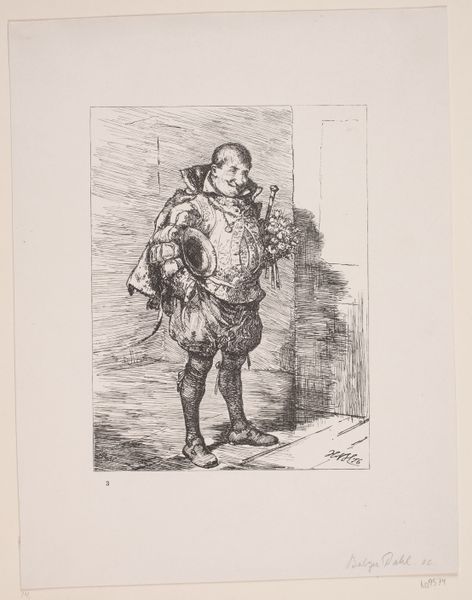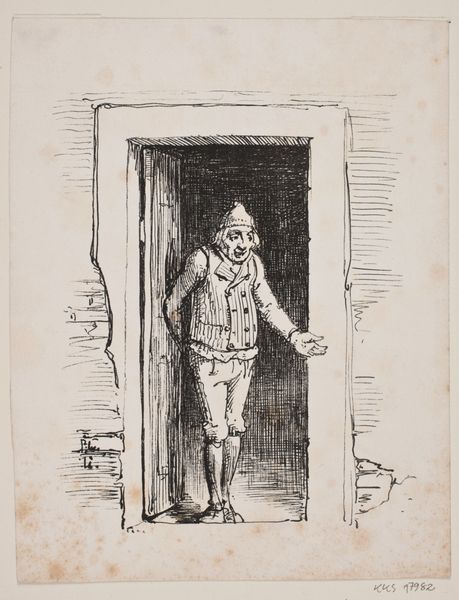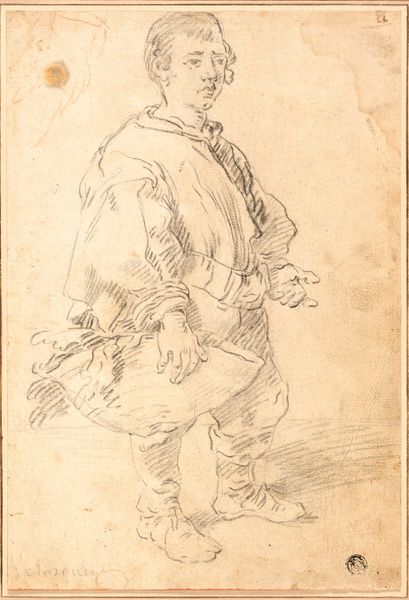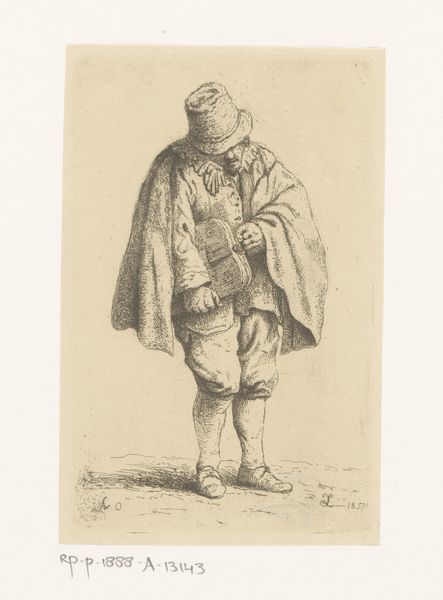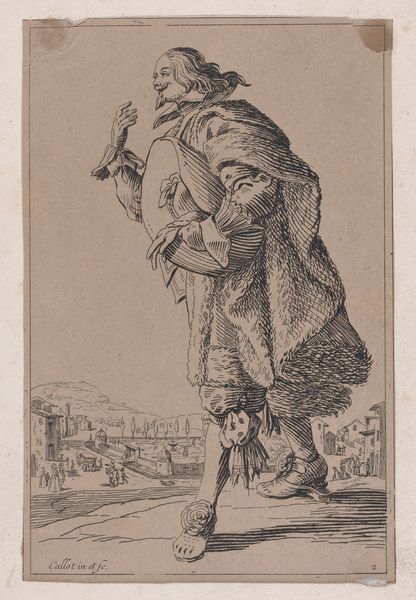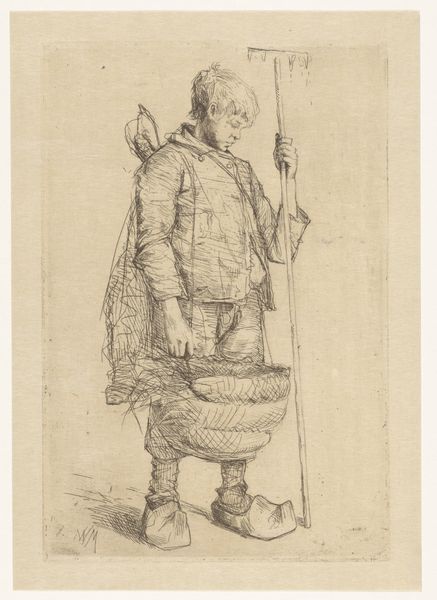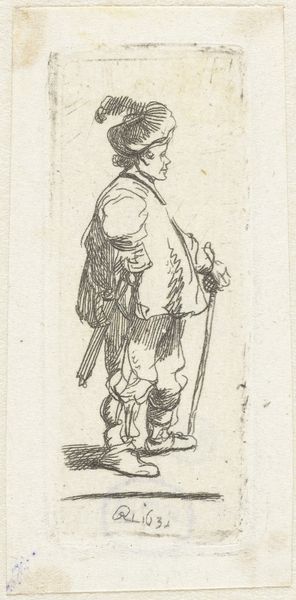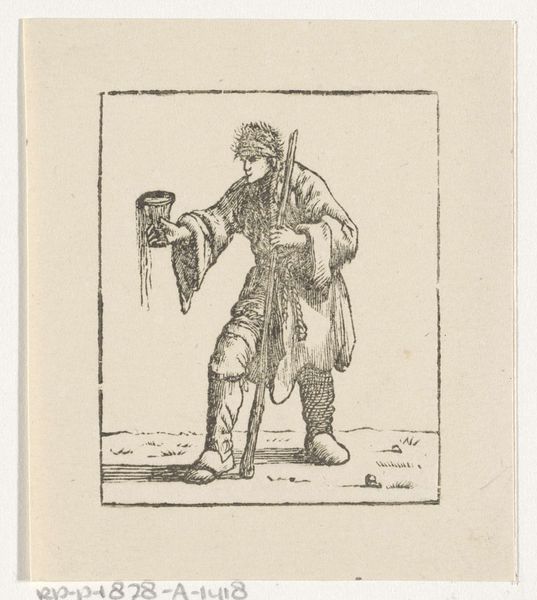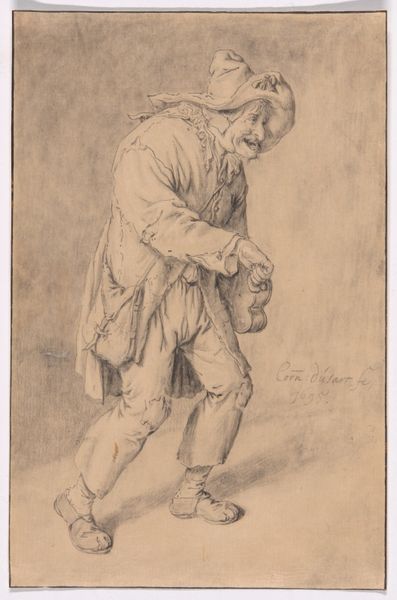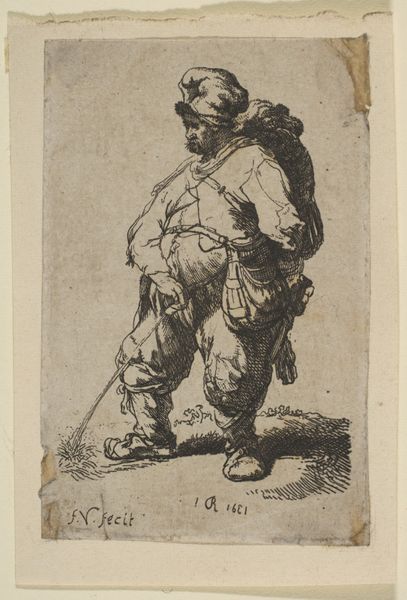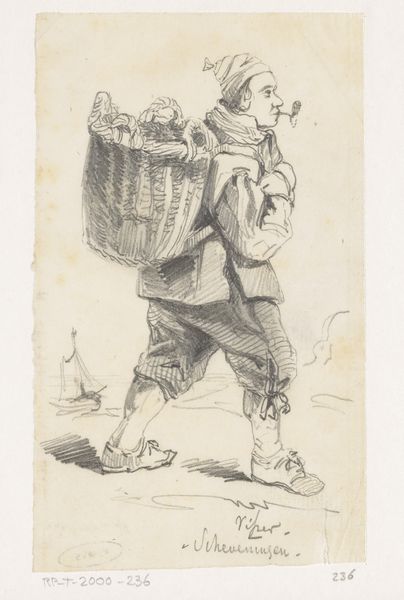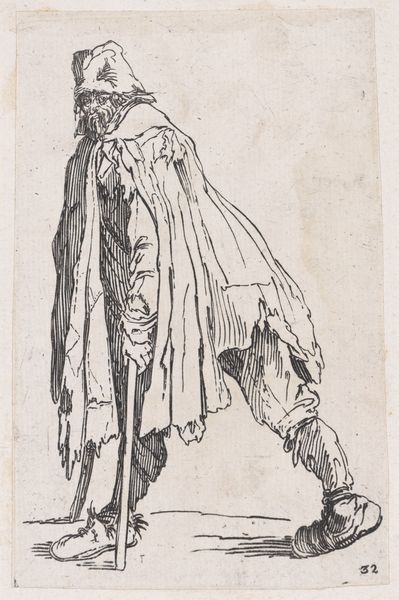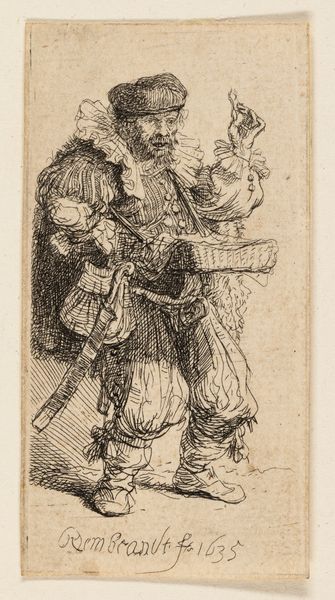
print, woodcut
#
toned paper
#
light pencil work
#
quirky sketch
# print
#
pencil sketch
#
personal sketchbook
#
sketchwork
#
ink drawing experimentation
#
woodcut
#
sketchbook drawing
#
sketchbook art
#
watercolor
Dimensions: 220 mm (height) x 173 mm (width) (bladmaal)
Editor: This is "En bejler," or "A Suitor," created by Balzer Dahl in 1876. It seems to be a print, perhaps a woodcut, using delicate lines and light pencil work. The character has such a quirky expression, a peculiar outfit, and overall it just feels like an odd personal sketch. What can we gather about the meaning behind it? Curator: Looking at "En bejler" through a materialist lens, let's consider the socio-economic conditions that would have enabled the production of this print. Dahl clearly had access to resources: the paper, the tools for woodcutting, and the training required. Given that this piece reads as a sketch, it brings into focus Dahl’s labour as part of artistic practice. How does the apparent ease of its execution play with your expectations about 19th-century printmaking? Editor: That’s interesting; I hadn't considered the actual effort required. It appears effortless but is probably the product of quite some time and skill with these tools. Do you think the material informs its sketch-like nature? Curator: Absolutely. The accessibility and relatively low cost of paper and pencil – or perhaps a metal stylus in this case, given the characteristics of the marks – fostered experimentation. It seems to straddle a boundary between "high art" and personal exploration. The figure, too, is not of nobility, his slightly unkempt attire hinting at a kind of lower-class satire. The flowers versus the weapon are a compelling paradox within this. What does it tell you? Editor: I suppose that if we delve into the materiality of it, maybe Dahl’s choice of a relatively accessible print method gave him freedom to experiment with subject matter that challenged the prevailing norms of the art world, where certain subjects are “appropriate.” I see this as perhaps the most engaging and surprising thing here. Curator: Indeed, so thinking about it all together, what's your understanding now of Dahl's artistic intervention within his society? Editor: I think focusing on the materiality makes this artwork much richer and I see now how printmaking processes allowed for critical commentary on class and artistic conventions that I might have missed at first.
Comments
No comments
Be the first to comment and join the conversation on the ultimate creative platform.
